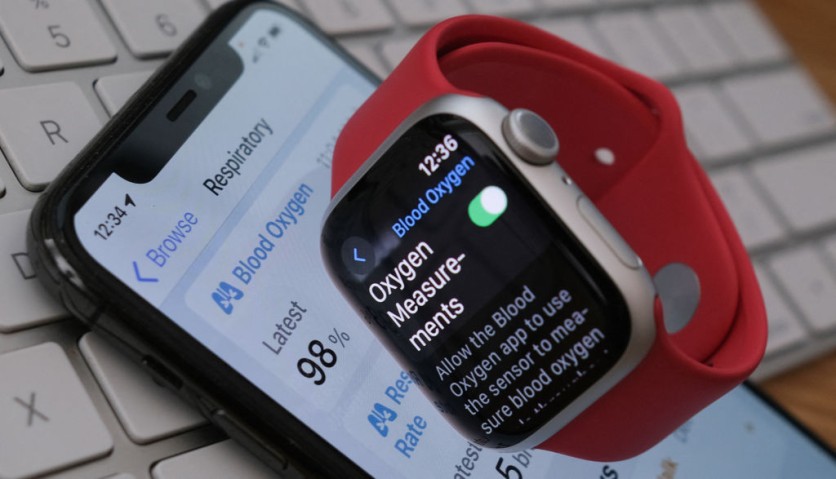The Apple Watch saga seems to have stemmed from an irresistible pitch by a scientist. The scientist emailed Apple CEO Tim Cook at around 1 a.m. California time in 2013 to outline a vision to make Apple the leader in the medical, fitness, and wellness market.
Within 10 hours, an Apple recruiter responded, initiating a chain of events that led to the recruitment of Marcelo Lamego, a Stanford engineering PhD, as part of Apple's team to develop a smartwatch with health sensors, Bloomberg reported.

Marcelo Lamego's History With Apple
Marcelo Lamego, previously the chief technical officer of Cercacor Laboratories Inc., a sister company of Masimo Corp., brought significant expertise to Apple.
His arrival at Apple is considered the catalyst that triggered legal actions from Masimo, a medical device company. The dispute centers around the allegations that Apple, by hiring Lamego, infringed on Masimo's patents related to the technology for noninvasively measuring a person's blood-oxygen level.
Masimo contended that Lamego, during his tenure at Apple, used the knowledge gained from his time at Cercacor and Masimo to develop the blood-oxygen feature.
Lamego departed from Apple in July 2014, a few months after joining, leading to Masimo's assertion that Lamego's exit occurred after Apple obtained what it needed. Apple's initial smartwatch, announced in September 2014, did not include the blood-oxygen sensor, relying instead on the more basic technologies.
The hiring of Lamego and subsequent legal battles between Apple and Masimo unfolded against Apple's exploration of wearable technology and health-focused device features.
The legal dispute intensified as Masimo accused Apple of not only poaching Lamego but also hiring Masimo's former chief medical officer and approximately 20 other employees, alleging that Apple used a meeting between the two companies to gain insights into Masimo's technology and personnel.
Masimo filed a lawsuit against Apple, seeking over $3 billion in damages, asserting that Apple's actions violated its patents. Apple countered, denying any wrongdoing and asserting that Masimo's lawsuit was an attempt to clear the way for its own consumer-focused wearables.
The Legal Battle
The legal battle escalated further when the US International Trade Commission (ITC) ruled in favor of Masimo in October, ordering Apple to remove infringing models from the US.
The dispute has not only impacted Apple's sales but also underscored the significance of the blood-oxygen feature, considered the fifth vital sign, in wearable devices.
Apple's strong disagreement with the ITC decision, its efforts to make software changes to comply with the ruling, and its pursuit of legal remedies suggest a determination to navigate the challenges Masimo's claims pose.
As Masimo seeks financial compensation and an apology, the clash between the two companies raises questions about the intersection of technology, intellectual property, and competition in the fast-evolving landscape of wearable devices and health-focused innovations.
The ongoing legal proceedings highlight the complexities of disputes in the tech industry, where companies vie for market dominance and intellectual property protection.

![Apple Watch Series 10 [GPS 42mm]](https://d.techtimes.com/en/full/453899/apple-watch-series-10-gps-42mm.jpg?w=184&h=103&f=9fb3c2ea2db928c663d1d2eadbcb3e52)



